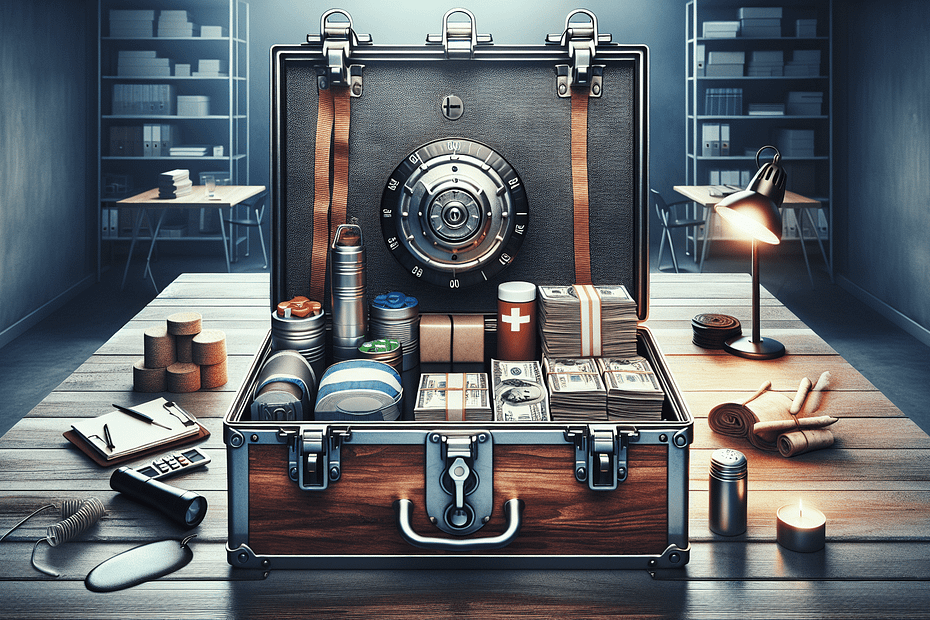In today’s unpredictable world, it’s crucial to have a financial contingency plan in place to tackle unexpected disruptions like natural disasters. By setting aside an emergency fund, reviewing insurance coverage, and creating a budget to withstand potential financial setbacks, you can ensure that you are better prepared to navigate any unforeseen challenges that may come your way. Prioritizing financial preparedness will provide peace of mind and stability in times of crisis. How Can I Create A Financial Contingency Plan To Address Unexpected Disruptions, Such As Natural Disasters?
Have you ever thought about what you would do if a natural disaster struck and impacted your finances? It’s important to have a plan in place to address unexpected disruptions and safeguard your financial well-being. In this article, we will explore how you can create a financial contingency plan to help you navigate through unforeseen circumstances such as natural disasters. Let’s get started!
Assess Your Current Financial Situation
Before you can create a financial contingency plan, it’s essential to assess your current financial situation. Take a close look at your income, expenses, savings, debts, and assets. Understanding where you stand financially will help you determine how much of a buffer you need to build to protect yourself in case of an emergency.
It’s a good idea to create a simple budget to track your income and expenses. This will give you a clear picture of your financial health and help you identify areas where you can potentially cut back on expenses to free up more money for your contingency fund.
Build an Emergency Fund
One of the key components of a financial contingency plan is having an emergency fund. An emergency fund is a stash of money set aside to cover unexpected expenses or financial emergencies. This fund can provide a financial safety net when you need it the most, such as in the aftermath of a natural disaster.
Financial experts recommend having at least three to six months’ worth of living expenses saved in your emergency fund. If you’re self-employed or have a fluctuating income, you may want to aim for a larger emergency fund to account for potential income disruptions.
How to Build an Emergency Fund:
- Start by setting a specific savings goal for your emergency fund based on your monthly expenses.
- Treat your emergency fund like a non-negotiable monthly expense and prioritize saving for it.
- Set up automatic transfers from your checking account to your emergency fund to ensure consistent savings.
- Look for ways to cut back on unnecessary expenses and redirect those savings into your emergency fund.
- Avoid tapping into your emergency fund for non-essential purchases or expenses.
Consider Insurance Coverage
Insurance is another important aspect of a comprehensive financial contingency plan. Different types of insurance can help protect you and your assets in the event of unexpected disruptions, such as natural disasters. Consider the following types of insurance coverage to strengthen your financial safety net:
Homeowners or Renters Insurance:
Homeowners insurance can help cover the cost of repairs or rebuilding your home in the aftermath of a natural disaster, such as a hurricane or wildfire. Renters insurance, on the other hand, can protect your personal belongings in case of damage or loss.
Health Insurance:
Health insurance can help offset the cost of medical treatment or hospitalization resulting from injuries sustained during a natural disaster. Make sure you understand your health insurance coverage and any limitations or exclusions related to emergencies.
Disability Insurance:
Disability insurance provides income replacement if you become unable to work due to a disability caused by a natural disaster or any other unexpected event. This coverage can help you maintain financial stability and meet your ongoing expenses.
Life Insurance:
Life insurance can provide financial protection for your loved ones in the event of your untimely death due to a natural disaster. The death benefit can help cover funeral expenses, outstanding debts, and provide financial support for your family.
Diversify Your Investments
When creating a financial contingency plan, it’s important to diversify your investments to reduce risk and withstand market fluctuations. Diversification involves spreading your investment portfolio across different asset classes, industries, and geographic regions to minimize the impact of a single event, such as a natural disaster, on your overall financial health.
Benefits of Diversification:
- Reduces concentration risk by avoiding overexposure to a single investment or asset class.
- Helps maximize returns while minimizing potential losses.
- Enhances portfolio resilience and stability in the face of economic uncertainties or market volatility.
- Provides a hedge against unforeseen events that may impact specific sectors or industries.
Establish an Alternative Income Source
In times of unexpected disruptions, such as natural disasters, having an alternative income source can provide you with financial flexibility and peace of mind. Whether it’s a side hustle, freelance work, rental property, or investments that generate passive income, diversifying your income streams can help you weather financial storms more effectively.
Ideas for Alternative Income Sources:
- Freelancing in your area of expertise or offering services on a platform like Fiverr or Upwork.
- Starting a small business, such as an online store or consulting services.
- Investing in rental properties or real estate crowdfunding platforms.
- Generating passive income through dividend-paying stocks, bonds, or rental income.
Review and Update Your Financial Contingency Plan Regularly
Creating a financial contingency plan is not a one-time task but an ongoing process that requires regular review and adjustments. Life circumstances, financial goals, and market conditions can change over time, so it’s crucial to revisit your plan periodically and make necessary updates to ensure its relevance and effectiveness.
Take the time to review your emergency fund balance, insurance coverage, investment portfolio, and alternative income sources at least once a year. Evaluate any new risks or opportunities that may impact your financial stability and make adjustments to your contingency plan accordingly.
Final Thoughts
In conclusion, creating a financial contingency plan to address unexpected disruptions, such as natural disasters, is a critical step toward safeguarding your financial future. By assessing your current financial situation, building an emergency fund, securing adequate insurance coverage, diversifying your investments, establishing alternative income sources, and reviewing your plan regularly, you can better prepare yourself to navigate through unforeseen circumstances and protect your financial well-being.
Remember, it’s never too early to start planning for the unexpected. By taking proactive steps today, you can build a solid financial foundation that will support you in times of need and uncertainty. Stay informed, stay prepared, and stay financially resilient. Your future self will thank you for it!



